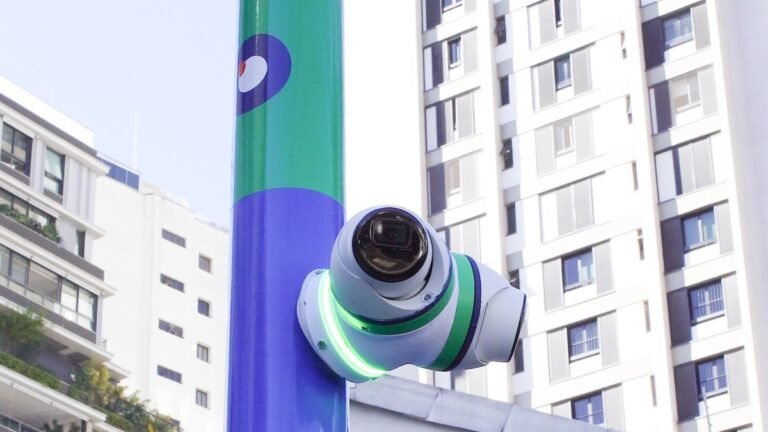
It also includes a commitment to let customers change cloud providers, or services within the cloud, if they choose to.
It also details a focus on building cybersecurity around AI services; attention to building data centers and other infrastructure in an environmentally-sound way; and education investments.
Brad Smith, the president and vice chair of Microsoft, announced the framework today at the Mobile World Congress in Barcelona.
The announcement comes at the same time that Microsoft is coming under increasing regulatory scrutiny for its $13 billion investment in OpenAI, which currently gives it a 49% stake in the startup that is leading the charge for generative AI services globally.
In January, the European competition watchdog said that it was assessing whether the investment falls under antitrust rules.

We can’t compete against our global peers with that engine throttled by last-generation digital infrastructure and policy.
They are already slowing investment in 5G network deployments and signaling their disinterest in 6G investment.
If we create more game-changing wireless applications — from advanced manufacturing, to smart cities, to autonomous transport, to remote sensing — we create demand that pulls digital infrastructure forward.
But we can’t compete against our global peers with that engine throttled by last-generation digital infrastructure and policy.
We must acknowledge new realities and play to our strengths to reverse digital infrastructure deterioration.

When IT was responsible for servers onsite, understanding what you owned and where it lived was not a big problem.
Faddom, an early stage Israeli startup, helps companies map their infrastructure wherever it lives, and helps them visualize the connections and dependencies, taking aim at medium-sized enterprises.
Once the map is in place, companies can use the information for a variety of tasks such as infrastructure change management and migrations, cybersecurity and compliance.
It defines its target market as companies with between a few hundred and a few thousand employees managing perhaps 100 servers or or more with between $100 million to a few billion dollars in revenue.
Usually their budgets will be very low, and usually there’s no innovation tailored for that type of segment,” he said.

Where it is differentiating itself is through its Simetrik Building Blocks, or SBBs, which are scalable and adaptable concepts based on no-code development and generative AI technologies.
In the past two years, the company grew to have clients in more than 35 countries, up from 10, and is monitoring over 200 million records every day.
Previously that was 70 million records daily.
The use of the new funds will go into further developing the Simetrik Building Blocks, enhancing AI capabilities and continuing to expand Simetrik’s international reach.
They need a new approach, and that is where our building blocks have a strong product market piece.”

Tomorrow.io just released the results from its first two radar satellites, which, thanks to machine learning, turn out to be competitive with larger, more old-school forecasting tech on Earth and in orbit.
Weather prediction is complex for a lot of reasons, but the interplay between high-powered but legacy hardware (like radar networks and older satellites) and modern software is a big one.
Space is, of course, the obvious place to invest, but weather infrastructure is prohibitively big and heavy.
Tomorrow.io’s plan is to create a new space-based radar infrastructure with a modern twist.
“We are working on providing real time precipitation data anywhere in the world, which we believe is a game changer in the field of weather forecasting,” Chowla said.

At least, CES 2024 suggests it is Hyundai, Nikola, Bosch and others are seriously pushing fuel cells, but why now?
At CES, Nikola finally showed off one of its first US-built hydrogen trucks that it’s starting to ship to customers.
The rides included a small train “capable of being powered by hydrogen energy” and an “AI fortune teller.”Why now?
For one, the 2022 Bipartisan Infrastructure Law put $9.5 billion towards “clean hydrogen initiatives” to create hydrogen production “hubs” across the U.S.
For example, Shell, BP, Chevron and ExxonMobil are all members of a lobbying group called the Clean Hydrogen Future Coalition.

Erick Coser and Otávio Costa Miranda moved back to Brazil in 2019 to solve a large, yet unsolved problem in Latin America.
Meanwhile in São Paulo, that is one camera per thousand people.
Coser and Costa Miranda drew on the experiences of Europe to create Gabriel in 2020.
The company integrates cameras and computer vision with routine police operations to address public safety challenges across Latin America.
That walks side-by-side with strong investments in the takeover of São Paulo in 2024 and preparations for launching new cities in 2025.”

Arkon Energy, a data center infrastructure company, closed a $110 million private funding round to expand its operations, the company’s CEO Josh Payne shared exclusively with TechCrunch.
“These sites appeal to both bitcoin miners and AI [or] machine learning clients who have very high power computing demands,” Payne said.
“We are essentially a landlord who owns the underlying infrastructure assets.”Arkon’s business model focuses on strategically acquiring distressed data center assets across the globe.
“The current and future demand for data center capacity of all types that we are seeing globally, but especially in the U.S., is unprecedented and monumental.
Arkon aims to fill that gap by providing the underlying infrastructure layer that the AI sector relies on.

Akron Energy, a data center infrastructure company, closed a $110 million private funding round to expand its operations, the company’s CEO Josh Payne shared exclusively with TechCrunch.
“These sites appeal to both bitcoin miners and AI [or] machine learning clients who have very high power computing demands,” Payne said.
“We are essentially a landlord who owns the underlying infrastructure assets.”Akron’s business model focuses on strategically acquiring distressed data center assets across the globe.
“The current and future demand for data center capacity of all types that we are seeing globally, but especially in the U.S., is unprecedented and monumental.
Akron aims to fill that gap by providing the underlying infrastructure layer that the AI sector relies on.

“Intrinsic is a fully customizable AI content moderation platform,” Mellata said.
Intrinsic, he explained, lets customers “ask” it about mistakes it makes in content moderation decisions and offers explanation as to its reasoning.
The platform also hosts manual review and labeling tools that allow customers to fine-tune moderation models on their own data.
“Most conventional trust and safety solutions aren’t flexible and weren’t built to evolve with abuse,” Mellata said.
“The broader slowdown in tech is driving more interest in automation for trust and safety, which places Intrinsic in a unique position,” Mellata said.













